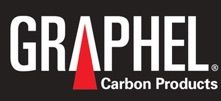Tips for Designing an EDM Electrode
Last week I had the opportunity to sit with the Engineering Department at Graphel Carbon Products to discuss their most recent projects. During our 60-minute discussion, one thing that came to mind was that information, design, and communication could help save time and money. The Six-person department conveyed critical details on design work Engineers should consider when putting an EDM electrode project together. Here are the highlights of our conversation.
More Than a Blueprint
As I spent time in West Chester, OH, I noticed one common theme…things are busy. The Graphel Carbon Products Engineering Team had a variety of aerospace, heat treating, and gun manufacturing projects in process. One way to streamline the design, quotation, and production process is to have eight essential factors defined and available before requesting electrodes or EDM tooling design quotes.
- Blueprint
- Tolerancing clearly identified on the blueprint.
- CAD Model (which matches what is on the blueprint).
- What equipment will the electrode be running on?
- What graphite or copper-impregnated graphite material is needed? (If unknown we can assist in selection).
- What is the workpiece material?
- Surface finish requirements
- What holding system is being used to hold the electrode? (System 3R, Schunk, Erowa, etc.)
“With the complexity of the parts we are seeing today, most of the time just a blueprint won’t suffice,” says Jeremy Robbins, Engineering Technician. “With a complex design and how small parts are getting, you need tolerancing, a blueprint, and a CAD Model to start your project,” said Robbins, a 13-year employee with Graphel.
But Graphel can help with any design questions and make suggestions to simplify the design, saving time and money.
“Customers that design electrodes can have something more simplified if they talk with us before they do their design work,” said Robbins. “Sometimes, what they have created is a nonmachinable or costly part. They often buy bases on an electrode they don’t need to buy. We can design a tool for that electrode to alleviate the base’s cost and simplify manufacturing.”
Engineering Technician, Patrick McKenzie, mentions that sometimes simplifying things may be the best option. “Recently, a customer came to us with a round electrode, and we reviewed the design and went back to the customer and told them if we can manufacture this on a square base, we can manufacture this ten times easier and save a bunch of money. These are the types of things we have been doing with many customers,” comments McKenzie, who has been with Graphel since 1996. “This all could be developed at the quoting stage.”
Bill Heyser, Engineering Manager, believes other information would help with the design. “The equipment they plan on running the job on matters,” said Heyser. “This determines the size of the envelope, and it also determines the holding system to hold the electrode. So, we need to understand if the customer has tooling already that they can use to clamp the electrode matched edges against or if they plan on using a holding system like Erowa or System 3R. Familiarity with the types of graphite that they have is also important,” said Heyser. “We have some customers that are used to EDMing with regular graphite, but their application may call for copper-impregnated graphite (such as Poco EDM-C3). We work with the customer to answer questions about different materials and grades. Knowing the material type that your electrode will be EDMing is also important. This will help determine what type of graphite to use, which is extremely important,” comments Heyser. “The last piece of information that is helpful would be whether a particular surface finish is required. Getting that information upfront in the planning stages ensures this is incorporated into the project.”
Design Industry Changes
Nate Buchanan, who has been with Graphel for over 20 years, believes most design work has changed in the last few years. “In recent years, designs were very mechanical; now, we see more pneumatic designs. We are seeing a lot of quick-change designs with tooling and fixtures. Customers want something that is a more plug-and-play setup. We have seen this in many industries, including aerospace and gun manufacturing,” said Buchanan, Tooling & Design Engineer.
Having 30 years of experience in the industry, Bill Heyser feels the fixturing sizing has undoubtedly changed. “Some of the fixturing is getting so tiny that making the parts gets more difficult,” said Heyser. The trend we see on the electrodes is for multiple features being combined, making complex electrodes. A project that we are working on would at one time have had three electrodes to make the features. Now one electrode has all the features integrated together on a block. The production method to cut these electrodes is much more complex, and even tolerancing is on a trend that is getting tighter and tighter,” mentions Heyser. “In the aerospace industry, there seems to be a trend of engine components getting smaller and more complex for lighter weight and better efficiency.”
Another aspect that has changed in many industries is the amount of customer data requested. “Many new customers have requested more data than ever with their finished products,” said Heyser. “Some of the data is even being requested in specific formats that were never requested before. One customer requested specially color-coded data that would require reconfiguring our CMM machine output and some have different requirements for serialization of parts tied to their data. It is nice that at Graphel we can adapt to the customers’ requests.”
Graphel Carbon Products Engineering Team
Bill Heyser, Engineering & IT Manager, bill.heyser@graphel.com
Nathan Buchanan, Tool & Electrode Design Engineer, nathan.buchanan@graphel.com
Pat McKenzie, Engineering Technician, pat.mckenzie@graphel.com
Jeremy Robbins, Engineering Technician, jeremy.robbins@graphel.com
Alex Pena, Time Study Analyst, alex.pena@graphel.com
Jacob Stringer, CAD Design, jacob.stringer@graphel.com
